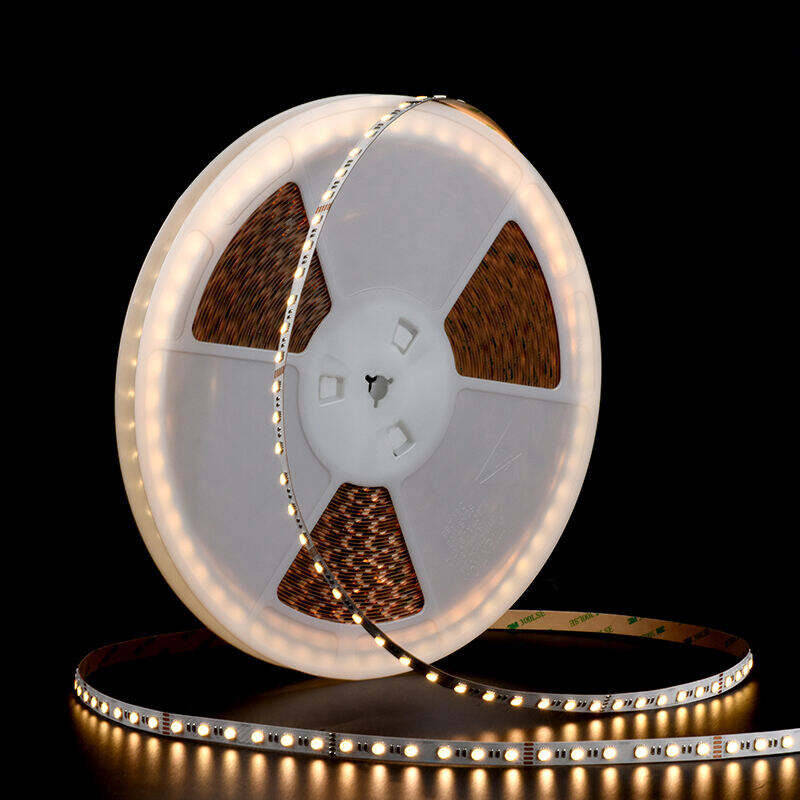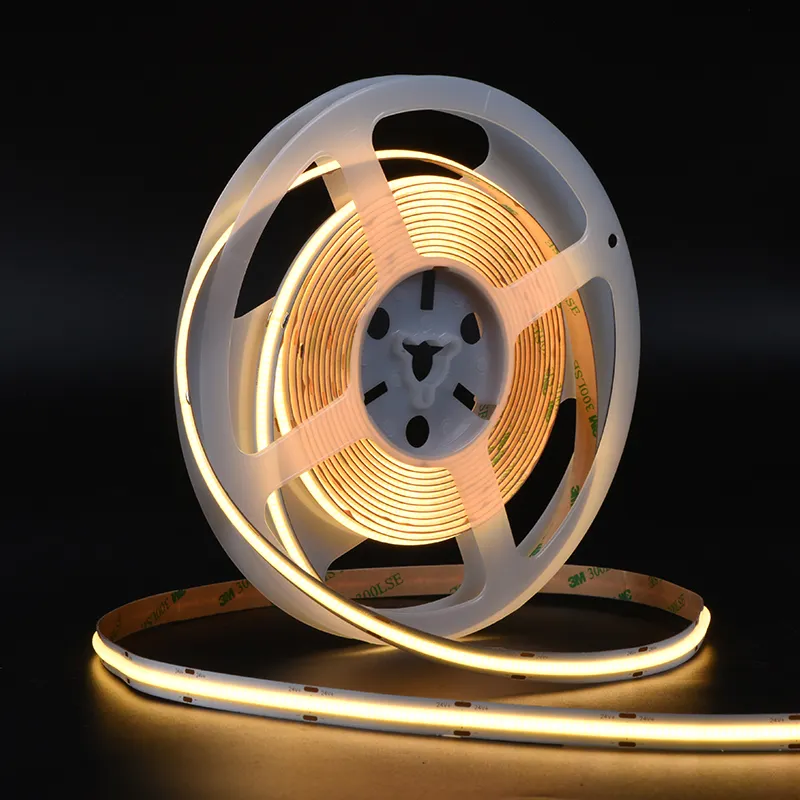Technological Innovations and Industry Trends in LED Strip Lights
Jul.31.2025
In the dynamic landscape of lighting technology, LED strip lights have emerged as a versatile and popular choice across various sectors. Their evolution, driven by technological innovations, has significantly transformed how we illuminate our spaces, both indoors and outdoors. This article delves into the key technological advancements and industry trends shaping the future of LED strip lights.
Tighter Chip Spacing for Enhanced Aesthetics
One of the notable trends in LED strip lights is the reduction in chip spacing. Traditional SMD3528 strips, which once dominated the market, typically had 60 or 120 LEDs per meter. While suitable for basic applications, they often left visible light spots, detracting from the overall aesthetic. However, advancements have led to the development of SMD2835 and SMD2216 strips, where the LEDs are packed more closely together. This tighter layout reduces the appearance of individual light dots, resulting in a smoother and more uniform glow.
Taking it a step further, SMD2110 strips with 700 LEDs per meter offer an even more refined lighting experience. But the real game - changers are COB (Chip - on - Board) and SCOB (Surface - Chip - on - Board) strips. These innovative designs pack chips extremely close, creating a seamless, ribbon - like light effect with no visible spots. This makes them ideal for applications where a sleek and polished look is desired, such as in high - end kitchens, modern offices, or upscale retail displays.


Higher Brightness with Energy Efficiency
Energy efficiency has always been a crucial aspect of lighting technology, and LED strip lights are no exception. The measurement of luminous efficacy, expressed in lumens per watt (lm/w), has seen a remarkable upward trend. In the early days, LED strips might have achieved around 90 lm/w. Over time, this figure steadily increased to 100 lm/w, then 140 lm/w, and more recently, 160 lm/w. Today, top - tier LED strips can reach astonishing levels of 180 lm/w, 210 lm/w, or even 240 lm/w.
This improvement in luminous efficacy is not just a technical feat; it has real - world implications. For businesses, it means brighter workspaces without the burden of exorbitant electricity bills. In homes, it allows for well - lit rooms while keeping energy consumption in check. Moreover, regulatory standards, such as the EU's ERP (Energy - related Products) standard, which requires LED strips to have a minimum of 110 lm/w to be sold in Europe, are driving manufacturers to push the boundaries further. Through improved chip designs and smarter manufacturing techniques, these high - efficacy LED tapes are becoming more prevalent, offering more light output for less energy input.
Longer Strips with Consistent Illumination
Most LED strips operate on 12V or 24V power and are commonly sold in 5 - meter rolls. However, there is a growing trend towards longer strips with consistent brightness throughout their length. Manufacturers are working on overcoming the challenges associated with voltage drop, which can cause a decrease in brightness towards the end of a long strip. By using advanced circuitry and higher - quality conductors, they are ensuring that even longer strips maintain a uniform light output.
This development is particularly beneficial for large - scale applications. In commercial spaces like shopping malls, where long runs of LED strip lights are used for ambient lighting or to highlight architectural features, consistent illumination is crucial. Similarly, in outdoor applications such as illuminating the perimeter of a large building or along a long pathway, longer strips with uniform brightness simplify installation and provide a more cohesive lighting effect.
Smart Integration for Enhanced User Experience
The integration of LED strip lights with smart home systems is revolutionizing the way we interact with lighting. Leading manufacturers are designing LED strips that can seamlessly connect with popular platforms like Google Home, Amazon Alexa, and Apple HomeKit. This allows users to control their lighting settings with simple voice commands or through mobile apps.
Imagine being able to dim the lights in your living room, change their color to match your mood, or even set them to turn on and off at specific times, all with just a few words or a tap on your smartphone. In addition to convenience, smart integration also offers enhanced energy management. For example, users can set the lights to automatically adjust their brightness based on the time of day or the amount of natural light in the room, further reducing energy consumption.
Improved Durability and Flexibility
Durability and flexibility are two key factors that are being enhanced in modern LED strip lights. To increase durability, manufacturers are using better materials. Silicone covers are becoming increasingly popular as they provide excellent protection against moisture and dust. This makes the LED strips suitable for a wider range of applications, including both indoor and outdoor use. Whether it's in a humid bathroom or a dusty industrial environment, these protected LED strips can withstand the elements and continue to function optimally.
Flexibility has also been a focus area. Newer LED strip designs can be bent and shaped more easily, allowing for installation in tight corners, around curves, or in irregularly shaped spaces. This flexibility not only simplifies the installation process but also opens up new possibilities for creative lighting designs. For instance, in automotive lighting, flexible LED strips can be installed around the dashboard or in the footwells to create a unique and personalized lighting ambiance.
Miniaturization of Components
The trend towards miniaturization in the electronics industry has also influenced LED strip lights. Manufacturers are now producing thinner and more discrete strips. These miniaturized components make the LED strips easier to install in places where space is limited, such as in under - cabinet lighting or in the edges of furniture.
Furthermore, the smaller form factor of these strips makes them less visually intrusive, which is highly desirable in modern minimalist design concepts. In a contemporary home with clean lines and a clutter - free aesthetic, these thin LED strips can provide subtle and effective lighting without detracting from the overall design.
In conclusion, the LED strip light industry is experiencing a period of rapid innovation and growth. From advancements in chip technology and energy efficiency to smart integration and improved durability, these trends are not only enhancing the functionality of LED strip lights but also expanding their applications across a wide range of industries. As technology continues to evolve, we can expect to see even more exciting developments in the world of LED strip lights, further transforming the way we light up our surroundings.

